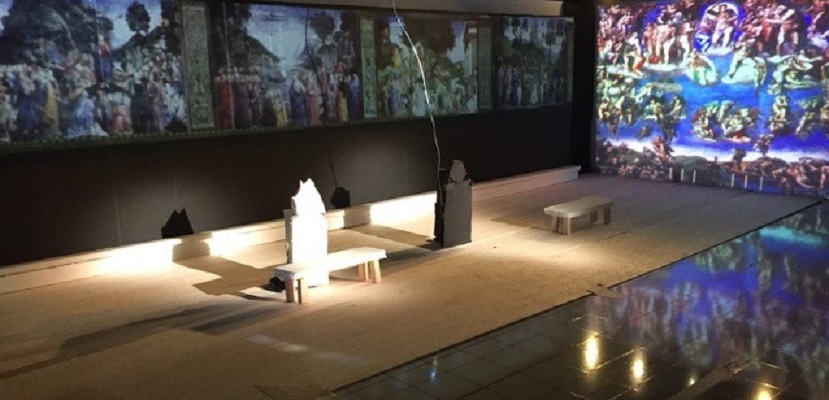 Spring, 2016
Spring, 2016
It doesn’t take long for the audience to sense that Unconscious in the Sistine Chapel isn’t a typical stage play. For one thing there are no props or scenery pieces. Instead, the backgrounds, including the elaborate artwork of the Sistine Chapel, are created using interactive projected lighting technology. A hologram of sorts.
As the play unfolds, the audience realizes that this is a conversation about the power and influence of big data, using big data processes to create the action.
David Clark, an Associate Professor of Media Arts at NSCAD University, is one of the creative minds behind the landmark play. “The play is an exploration of big data,” he says. “It asks the question whether we can extract physical data from artifacts in history.
Clark is no stranger to this kind of production. His award-winning multimedia projects have appeared at venues including Sundance, the SIGGRAPH Computer Conference, Transmediale in Berlin, and the Museum of Moving Images in New York. But he admits that Unconscious in the Sistine Chapel is unlike anything he’s worked on before. “There are a few things we’re inventing,” he says. “We’re doing things like using interactive props. For example, when an actor picks up a pair of binoculars and starts scanning the horizon with them, the projection of what he is seeing can be seen by the audience.”
At the core of the technology is the “holodeck” of the Sistine Chapel, an effect created using a networked eight projector array. The new technology also lights the actors with body position tracking technology. Daniel Oulton is the creative technologist and programmer who is designing the body position tracking technology.
The play is a piece of speculative fiction about a chance encounter in 1905 between psychoanalyst Sigmund Freud, author James Joyce and their companions in the Sistine Chapel. The action is interspersed with scenes of two modern characters; Phoebe, an archivist with a romantic view of history, and Phil, an investor working on a project that uses virtual reality environments reconstructed by data mining to re-animate history. Through the course of the play, it becomes clear that the interaction between Freud and Joyce is a manifestation of Phil’s project.
Michael MacKenzie is the author of Unconscious in the Sistine Chapel. “He’s an early innovator of virtual technology in theater,” says Clark. “My involvement began two summers ago when Michael workshopped the play. We started talking about using a large amount of technology to convey ideas about big data and history.”
ACENET is providing support for the project by sponsoring Unconscious in the Sistine Chapel through its Advanced Research Computing Sponsorship Program. The organization is also providing technical consultation to the project. “We were able to connect with the ACENET Data Cave at Saint Mary’s,” says Clark. “They provided a lot of technical advice.”
The play will debut at the new Halifax Central Library’s O’Regan Hall. The production has been designed specifically for the library space. “We’ve scaled O’Regan Hall to the dimensions of the Sistine Chapel,” says Clark. “The challenge will be to develop the production for other theatre companies.”
Despite the technical innovations, the real purpose behind the play is to get people talking, says Clark. “We’re hoping this will stimulate conversations about the power of big data.”